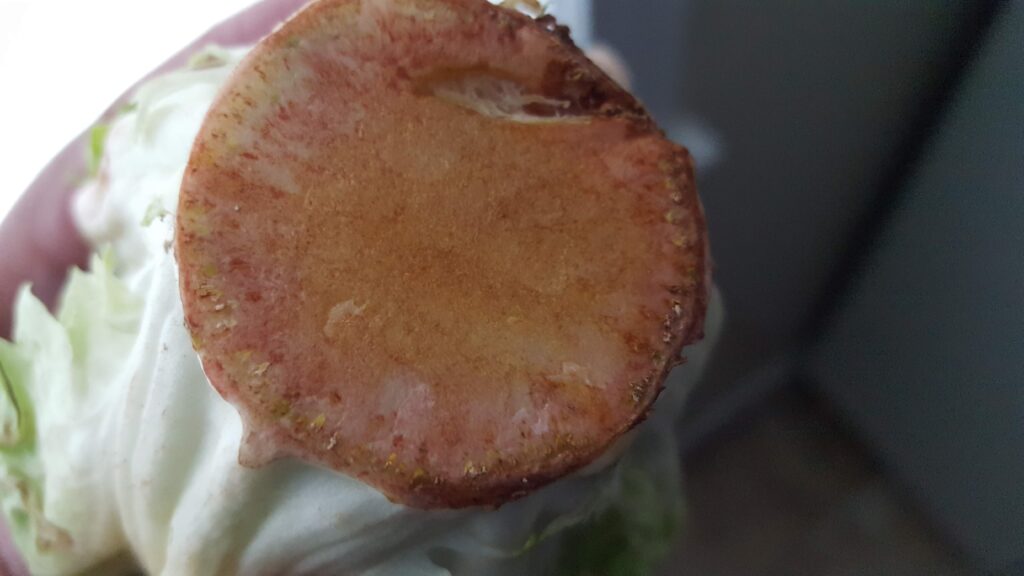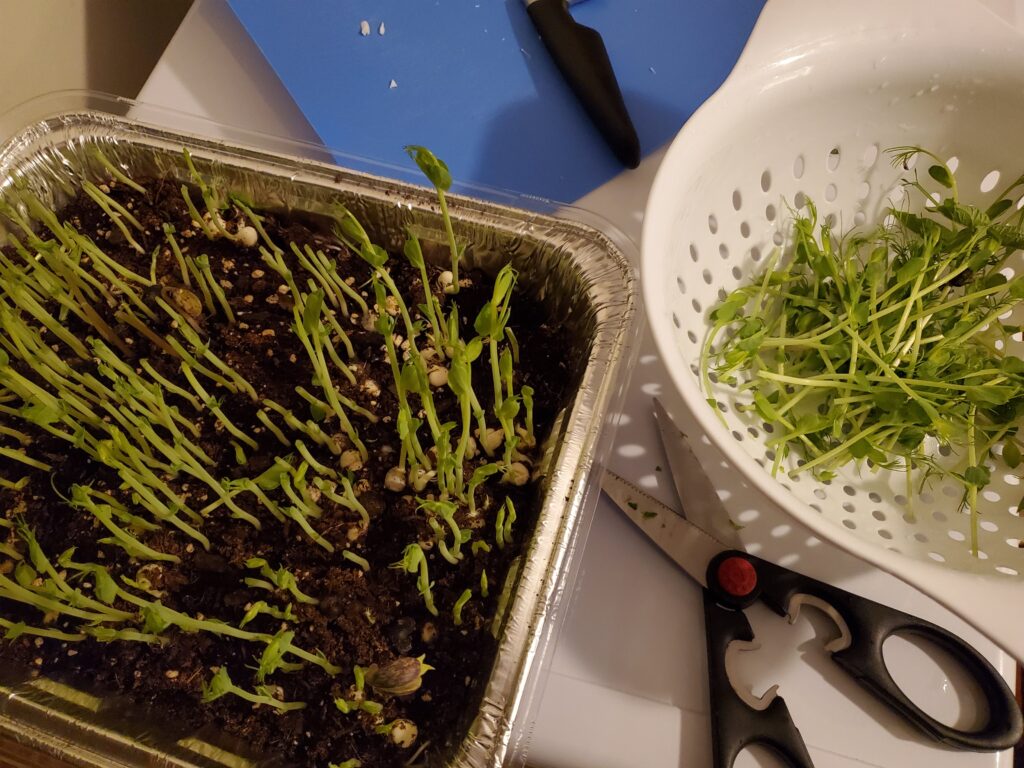Part 2: How to prep the things that you found in Part 1
Table of Contents
In the first part of this series, I gave you ideas for things to look for in your house that you could use to start a garden. You looked in your refrigerator, your pantry, and your garage. In this step, I will show you how to prep these things for your garden.

Let’s start with the items from your refrigerator.
Vegetables that grow into a head, like lettuce or into a tight bunch like celery are easy to prep. Just cut the bottom two to three inches off and place the root end in water. Technically, you can put these things directly into the soil. I prefer to start them in water. When I see that the vegetable has grown some roots, then I plant it. Waiting for roots, lets me know that the vegetable is still growing before I put the bottom in soil.
This is often called Kitchen Scrap Gardening. You can regrow the vegetable in just water for a short period of time before the plant finally dies. I like to put them in soil and set them outside so they are not taking up all of my valuable counter space but that is my preference.
I like to use clear plastic or glass containers for this so I can easily see if the vegetable is growing roots or mold. Roots are good. Mold is bad. Mold isn’t necessarily the end of the world. Try scraping the moldy part off and putting it back into the water.
If the container allows, I like to suspend the root end at the top. Then fill the container up with water so just the bottom is sitting in the water. I use small plastic cups for this. Toothpicks are useful if your root end will not sit nicely at the top of the container.
Another note on this method. YOU MUST CHANGE THE WATER. Frequently. Like, every other day. Not changing the water will lead to mold. Just saying.
Vegetables that are good candidates for this regrowing Kitchen Scrap method:
- Head lettuce
- Celery
- Cabbage
- Bok Choy
- Spring Onions
Lettuce and celery will start to grow new leaves or stalks from the center of the cut end. Cabbage will grow new leaves from the sides of the cut end. The cabbage leaves will look like little flowers sprouting out from the sides.

Spring onions, the green ones, will regrow from the cut ends. Spring onions, IMHO, are the easiest thing to grow. Period. If you have never tried to grow anything before, try this. INSTANT CONFIDENCE BOOSTER.
Bulb or root vegetables will grow using the same method but the results are not the same. You can grow the top portion of a root or bulb vegetable but you will not get another vegetable. You will get roots. You will get leaves. After a while, the plant will set a flower stalk. The flowers must be pollinated. This is another reason why I like to put these outside. After the flowers are pollinated, the plant will set seeds. You can plant the seeds and get more vegetables. YOU CANNOT GO BULB TO BULB.
Vegetables that are a good candidate for this regrowing Kitchen Scrap method:
- Carrots
- Onions
- Turnips
Garlic has a special place on this list. You plant the whole clove in soil, wrapped in its paper. The pointy end goes up and the blunt end goes down. If they are planted at the best time, Fall, you can go clove to bulb. If you plant them out of the ideal season, you may just get a bigger clove. You can eat the top of the garlic stalk as well.
There are a couple of other vegetables that you can regrow that I will just mention for now, but skip for this article. These are potatoes, sweet potatoes, and ginger. These will be explained in a separate article.
You can also grow fruit from your refrigerator. Generally, you want to rinse the seeds clean, no soap, and plant them in soil. Some things will be much harder to grow than others. You may not end up with a fruit that looks or tastes like the fruit that you grew it from. The seeds may not be viable. It is always better to try. You could end up pleasantly surprised.
Fruits that are good candidates for planting and growing from Kitchen Scraps:
- Tomatoes
- Peppers
- Cucumbers
- Squash
- Berries
I will also mention that you can try to grow fruit trees from seeds of fresh fruits. It may take 7 to 10 years for a fruit tree grown from seed to bear fruit. That is a little beyond the scope of this article but we will definitely get into that later.
Gardening is mostly about experimentation. It is better to try and fail than to not try at all.
Next, let’s get into the pantry items.
Dried seed items from your pantry can be planted directly in the soil. If I am curious about the viability of the seeds I may soak them in water before planting them. Sometimes you will get a root tail to pop out. This just gives you a good indication that the seeds will grow. The seeds may still grow if you do not get a root tail. I like to make sure, to the greatest extent possible, that my efforts will be rewarded.
When you are growing beans or peas, you will not normally know what type of plant you will get. It could be a bush or vining variety. You won’t know until you grow.
Pantry items that make good candidates for growing:
- Dried Beans
- Dried Peas
- Dried Lentils
- Popcorn
- Other types of spice seeds
With peas, you can grow the whole plant or you can grow them densely in a shallow tray, microgreen style. After 2 to 4 weeks you will have a mat of 6-inch vines. You can eat those as pea shoots. They taste like peas and are delicious. I tried these recently and absolutely love them.

I have seen some inconsistent and contradictory information about bean shoots as well as the difference between sprouts and shoots. So for now, one more time for the cheap seats, I’ll get into that in another article.
Finally, the garage.
Sunflower seeds in a birdseed mix are most likely what you would have found in your garage.
If you found something else that may grow, please tell us in the comments.
Sunflower seeds can also go directly into soil.
Some of the fruits and vegetables in this article with produce within a couple of weeks. Other things will take 3 to 4 months to give you a harvest. If you only have what is currently in your house, you probably have a good start.
If you have any questions about growing some of your own food in a small space, please do not hesitate to drop them below.
In the next article in this series, I will discuss what containers in your kitchen you should start saving for your fledgling garden.



0 Comments